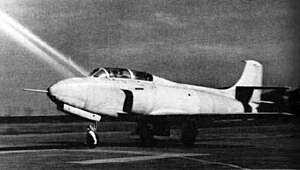
The de Havilland Vampire is a British jet fighter which was developed and manufactured by the de Havilland Aircraft Company. It was the second jet fighter to be operated by the RAF, after the Gloster Meteor, and the first to be powered by a single jet engine.

The Supermarine Attacker is a British single-seat naval jet fighter designed and produced by aircraft manufacturer Supermarine for the Royal Navy's Fleet Air Arm (FAA). The type has the distinction of being the first jet fighter to enter operational service with the FAA.
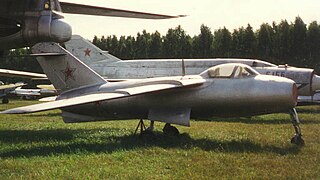
The Lavochkin La-15, was an early Soviet jet fighter and a contemporary of the Mikoyan-Gurevich MiG-15.
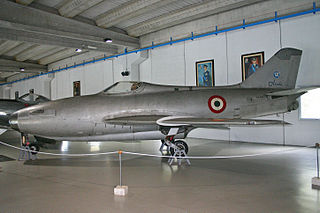
The Aerfer Ariete was a prototype fighter aircraft built in Italy in 1958. It was a refined derivative of the Aerfer Sagittario 2, and was an attempt to bring that aircraft up to a standard where it could be mass-produced as a viable combat aircraft.

The Rolls-Royce RB.41 Nene is a 1940s British centrifugal compressor turbojet engine. The Nene was a complete redesign, rather than a scaled-up Rolls-Royce Derwent, with a design target of 5,000 lbf (22 kN), making it the most powerful engine of its era. First run in 1944, it was Rolls-Royce's third jet engine to enter production, and first ran less than 6 months from the start of design. It was named after the River Nene in keeping with the company's tradition of naming its jet engines after rivers.

The Piaggio PD.808 was an Italian business jet built by Piaggio. It was designed as a joint venture between Piaggio and Douglas Aircraft Company of Long Beach, California, United States.

The de Havilland Ghost was the de Havilland Engine Company's second design of a turbojet engine to enter production and the world's first gas turbine engine to enter airline service. The Ghost powered the de Havilland Venom, de Havilland Comet and SAAB 29 Tunnan. It was a scaled-up development of the Goblin.
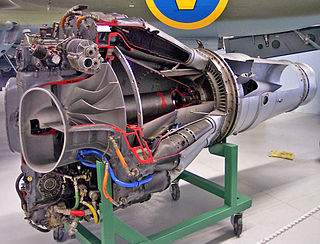
The de Havilland Goblin, originally designated as the Halford H-1, is an early turbojet engine designed by Frank Halford and built by de Havilland. The Goblin was the second British jet engine to fly, after Whittle's Power Jets W.1, and the first to pass a type test and receive a type certificate issued for an aircraft propulsion turbine.

The Hawker P.1081, also known as the "Australian Fighter" was a prototype British jet aircraft from the mid-twentieth century. The single example built was destroyed in a crash in 1951.

The Fiat G.55 Centauro was a single-engine single-seat World War II fighter aircraft used by the Regia Aeronautica and the Aeronautica Nazionale Repubblicana in 1943–1945. It was designed and built in Turin by Fiat. The Fiat G.55 was arguably the best type produced in Italy during World War II, but it did not enter production until 1943, when, after comparative tests against the Messerschmitt Bf 109G and the Focke-Wulf 190, the Luftwaffe itself regarded the Fiat G.55 as "the best Axis fighter".

The Saab 21R was a Swedish fighter/attack aircraft developed and produced by Svenska Aeroplan AB (SAAB). It was a jet-powered development of the piston-engined SAAB 21 and was the first jet aircraft to be produced by Saab. The R-suffix stands for reaktion (reaction), referencing reaktionsdrift or reaktionsmotor. Along with the Soviet Yakovlev Yak-15, the 21R was one of only two jet fighters to have been successfully converted from piston-powered aircraft.

The Bristol Siddeley Orpheus is a single-spool turbojet developed by Bristol Siddeley for various light fighter/trainer applications such as the Folland Gnat and the Fiat G.91. Later, the Orpheus formed the core of the first Bristol Pegasus vectored thrust turbofan used in the Harrier family.
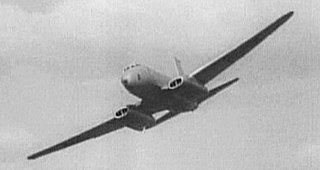
The Avro 706 Ashton was a British prototype jet airliner made by Avro during the 1950s. Although it flew nearly a year after the de Havilland Comet, it represented an experimental programme and was never intended for commercial use.

The Fokker S.14 Machtrainer is a two-seater military training jet aircraft designed and manufactured by the Dutch aircraft manufacturer Fokker for the Royal Netherlands Air Force (RNLAF). It has the distinction of being one of the first dedicated jet-powered training aircraft to be produced in the world.

The Arsenal VG 90 was a French carrier-based jet-engined interceptor developed in the late 1940s. It was intended to compete for an Aéronavale contract and first flew in 1949. It set a speed record for a French aircraft the following year, but both of the completed prototypes were destroyed in fatal crashes and the program was cancelled in 1952 before the third prototype was finished. The Aéronavale contract was eventually awarded to a license-built British aircraft. The remains of the last VG 90 were scrapped in 1978.
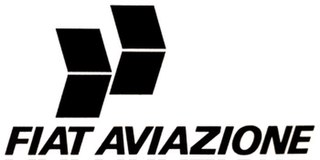
Fiat Aviazione was an Italian aircraft manufacturer, at one time part of the Fiat group, focused mainly on military aviation. After World War I, Fiat consolidated several Italian small aircraft manufacturers, like Pomilio and Ansaldo. Most famous were the Fiat biplane fighter aircraft of the 1930s, the Fiat CR.32 and the Fiat CR.42. Other notable designs were the fighters CR.20, G.50, G.55 and a bomber, the Fiat BR.20. In the 1950s, the company designed the G.91 light ground attack plane.

The Fiat G.46 was a military trainer developed in Italy shortly after World War II.
The Lavochkin La-168 was a jet fighter developed for the USSR. Like the better known Mikoyan MiG-15 which was ultimately selected and went on to become one of the most successful jet fighters of its era, the Lavochkin La-168 was designed in response to a 1946 request for an advanced swept-wing jet fighter capable of transonic performance. It was to use new turbojet based on the Rolls-Royce Nene in competition with the design bureaus of Artem Mikoyan and Mikhail Gurevich, and Aleksandr Yakovlev. A scaled down version of this aircraft would lead to the production of the La-15, which performed well but would be dropped in favor of the MiG-15.
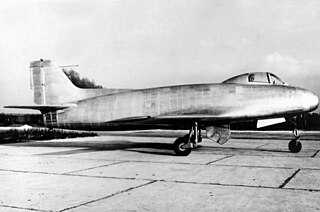
The Nord 2200 was a French carrier-based, jet-engined interceptor developed in the late 1940s. It was intended to compete for an Aéronavale contract, but was not selected for production after a 1950 accident badly damaged the sole prototype. It was repaired and resumed flight testing the following year, which including evaluating rocket-assisted take offs. After the aircraft made its last flight in 1954, it was used as a gunnery target. Much of the airframe was recovered in the 1980s, but its current disposition is uncertain.

The FiatG.91Y is an Italian ground-attack and reconnaissance aircraft which first flew in 1966. Although resembling its predecessor, the Fiat G.91, the aircraft was in fact a complete redesign, a major difference with it being equipped with twin engines rather than the original single engine.
